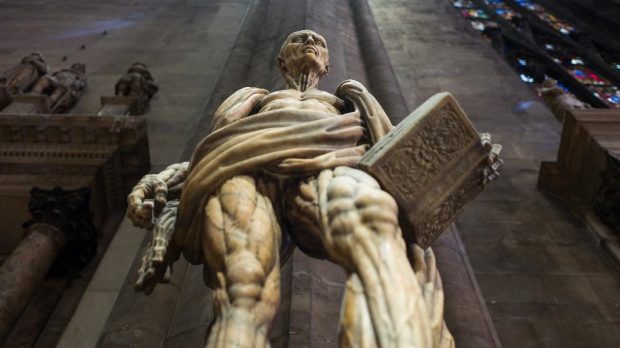In the history of Christianity, images have paradoxically been the object of both veneration and repulsion. Iconoclastic revolts – not only during the Reformation, but also earlier, with Byzantine Iconoclasm – in which the use or misuse of religious images was opposed created religious, political and economic divisions in society.
However, following Paul’s Letter to the Colossians, in which Jesus is presented as “the image of the invisible God” (Col. 1:15-18), Christians have always understood that, if the invisible God made himself visible in the human figure of Christ, then there is nothing wrong with the use of images to represent the deity. This understanding of Pauline doctrine allowed for the development of an exceptionally beautiful, prolific, and ongoing artistic tradition, in which Christianity adapted both the techniques and some of the motifs already present in Greek, Hellenistic, Middle Eastern, and Roman art.
Also, it should be remembered that in several passages of the Old Testament – especially those referring to the building of the Temple – God himself commands his people to create images (e.g., angels, bulls, snakes) that will be part of the decoration of the Temple, and even of the Ark of the Covenant. In all cases, it is clear these images are not to be worshiped – that is, they are not idols – but rather venerated. Images help the believer pray, meditate, and contemplate.
The Renaissance and the Baroque surely understood the role images might play in the imagination and emotions of the believer. Sometimes, they would bet on particularly powerful representations. This is the case of Marco D’Agrate’s “Saint Bartholomew Flayed.”
Marco D’Agrate was born in the early 16th century. Most sources would claim the year was 1504. We know he was born into a family of sculptors, and that he worked mainly in the Italian region of Lombardy.
Of all the sculptures one can find in the Duomo of Milan, surely D’Agrate’s “Saint Bartholomew Flayed” is the most famous one. Its perfection is the stuff of legend. D’Agrate himself had to sign it with a single line that reads “it was not Praxiteles who made me, but Marco D’Agrate,” Praxiteles being one of the greatest Greek masters of sculptures in the late classical period.
Made in 1562 for the Veneranda Fabbrica of the Duomo, the sculpture portrays the martyr carrying what looks like a strange drape on his shoulders and around his body. This drape, however, happens to be his skin, in a direct reference to the martyrdom he suffered.
Bartholomew was one of the twelve apostles of Jesus, according to the three synoptic Gospels (that is, those of Matthew, Mark, and Luke). Tradition claims (specifically, the works of Eusebius of Cesarea and of St. Jerome) that, after the Ascension, he embarked on missionary tours to Armenia and India, where he carried with him a copy of the Gospel of Matthew. It is said that he converted the Armenian king, Polymius, to Christianity. Enraged by his brother’s conversion, prince Astyages tortured and killed Bartholomew, skinning him alive. D’Agrate, then, saw the history of the martyrdom of St. Bartholomew as an opportunity to demonstrate his expertise with the chisel, sculpting a figure in which the anatomical detail of the human musculature can be appreciated in incredible detail, while showing the devotee the martyrdom that Bartholomew went through, bearing witness to his faith.

